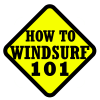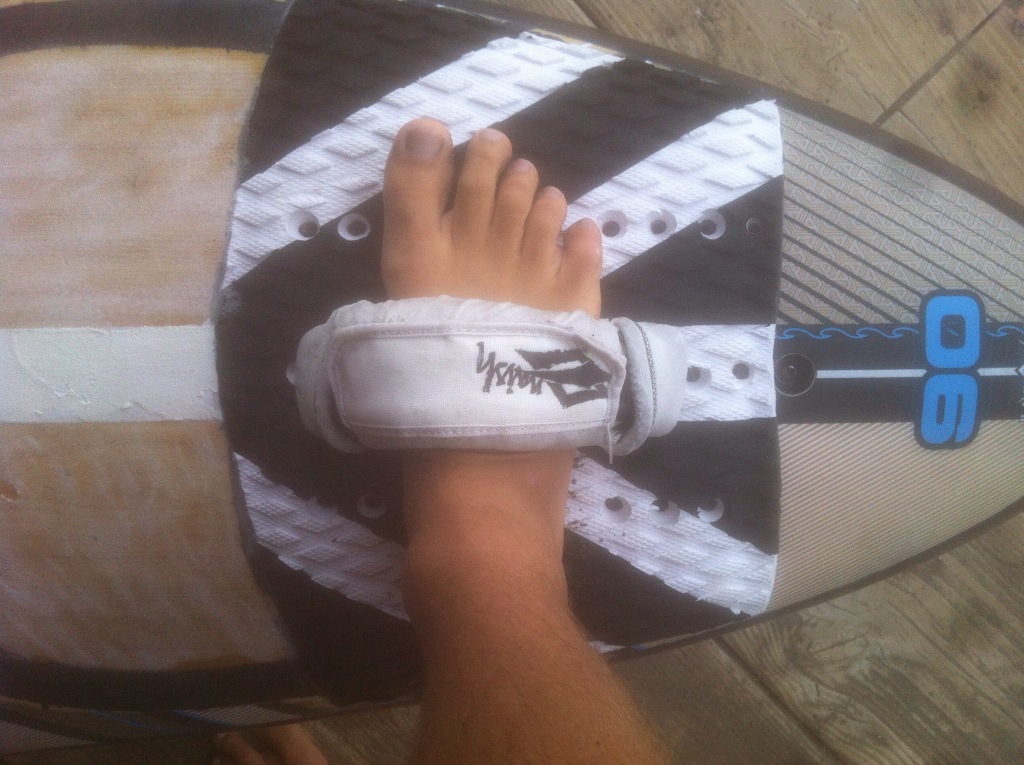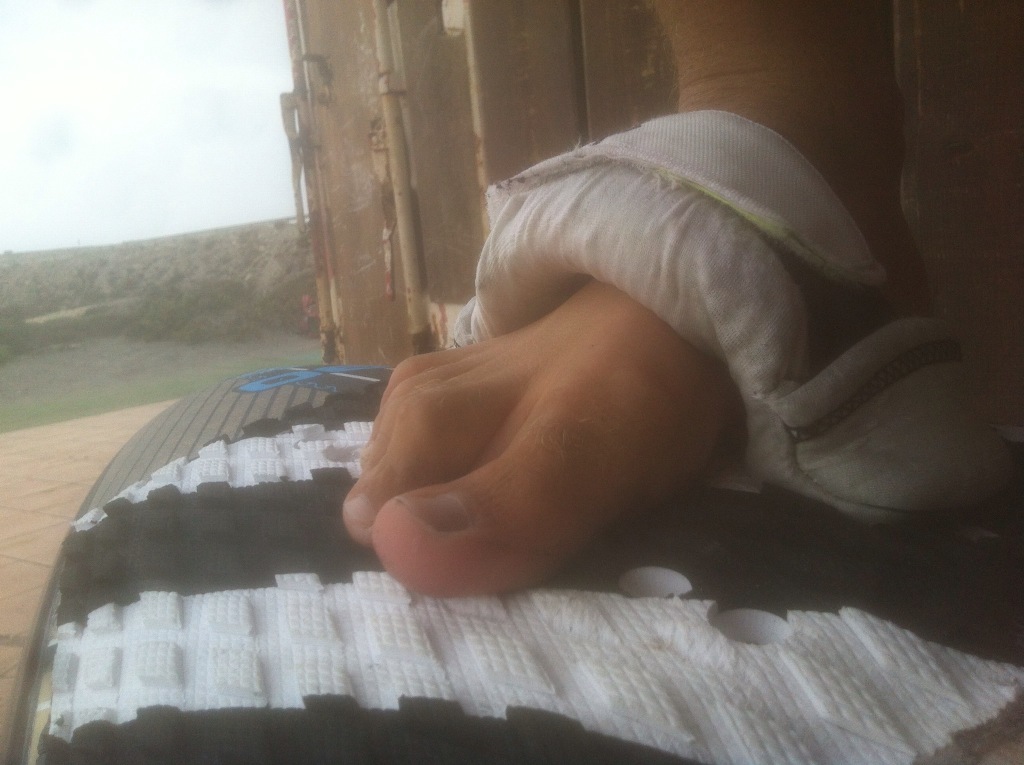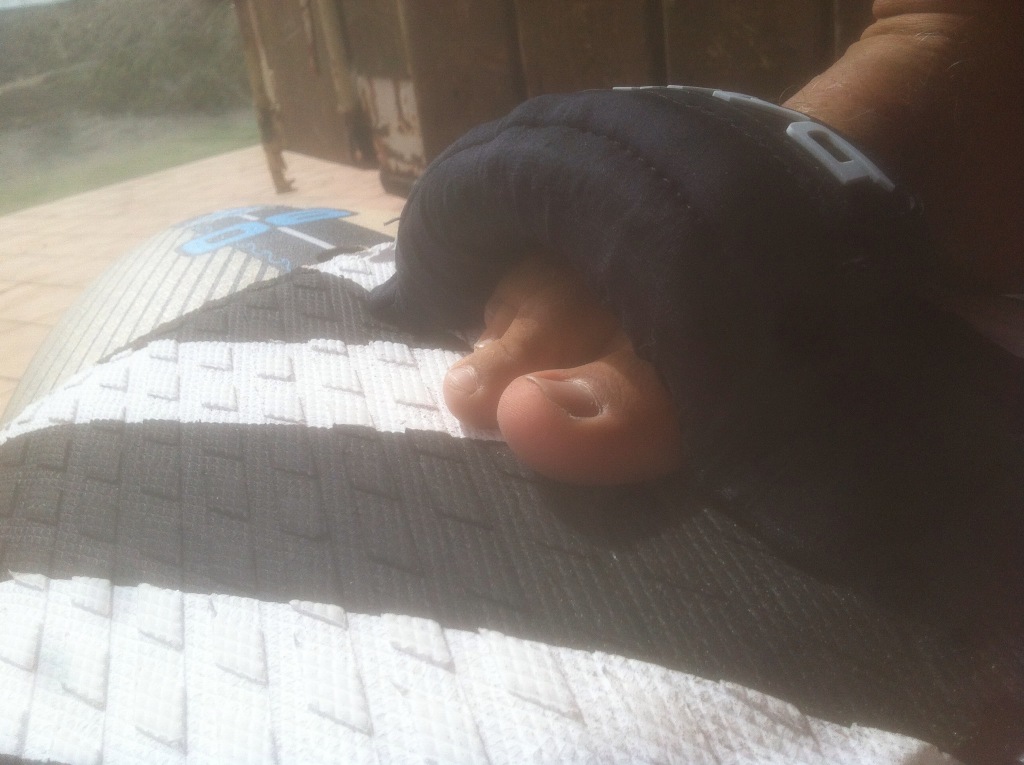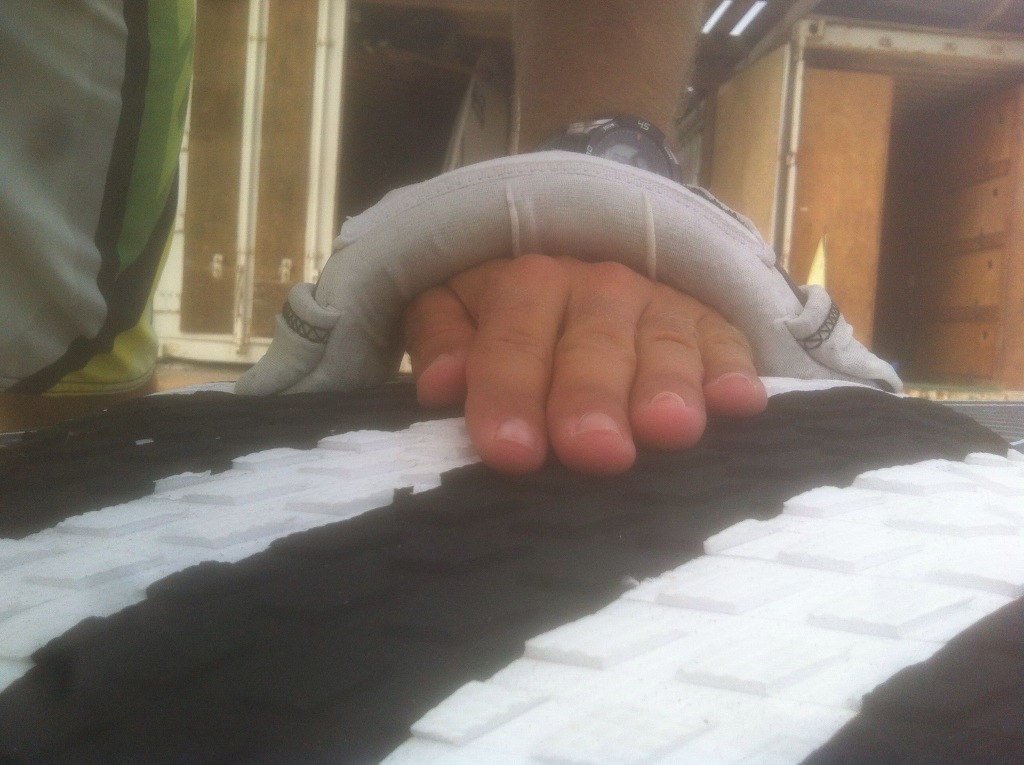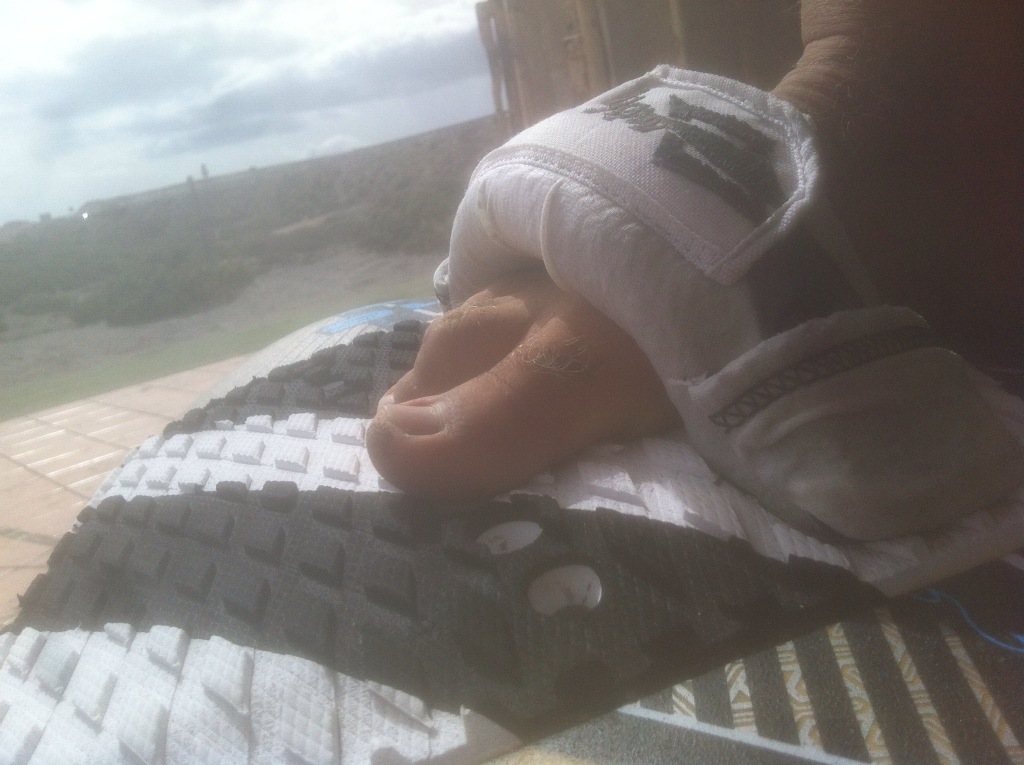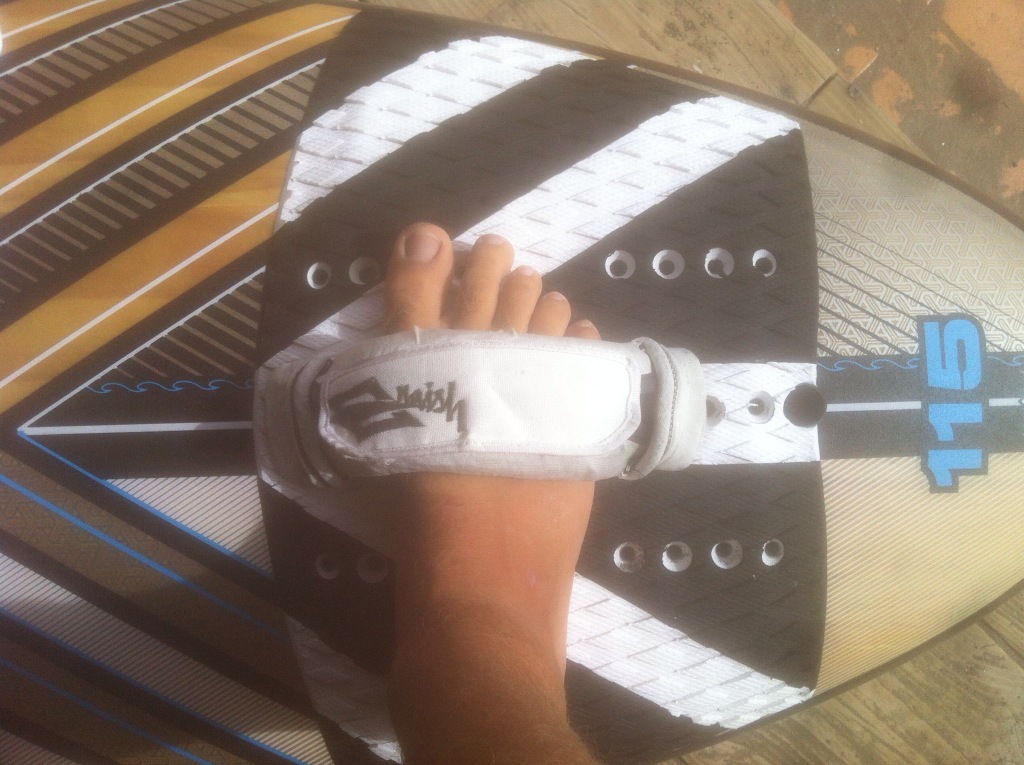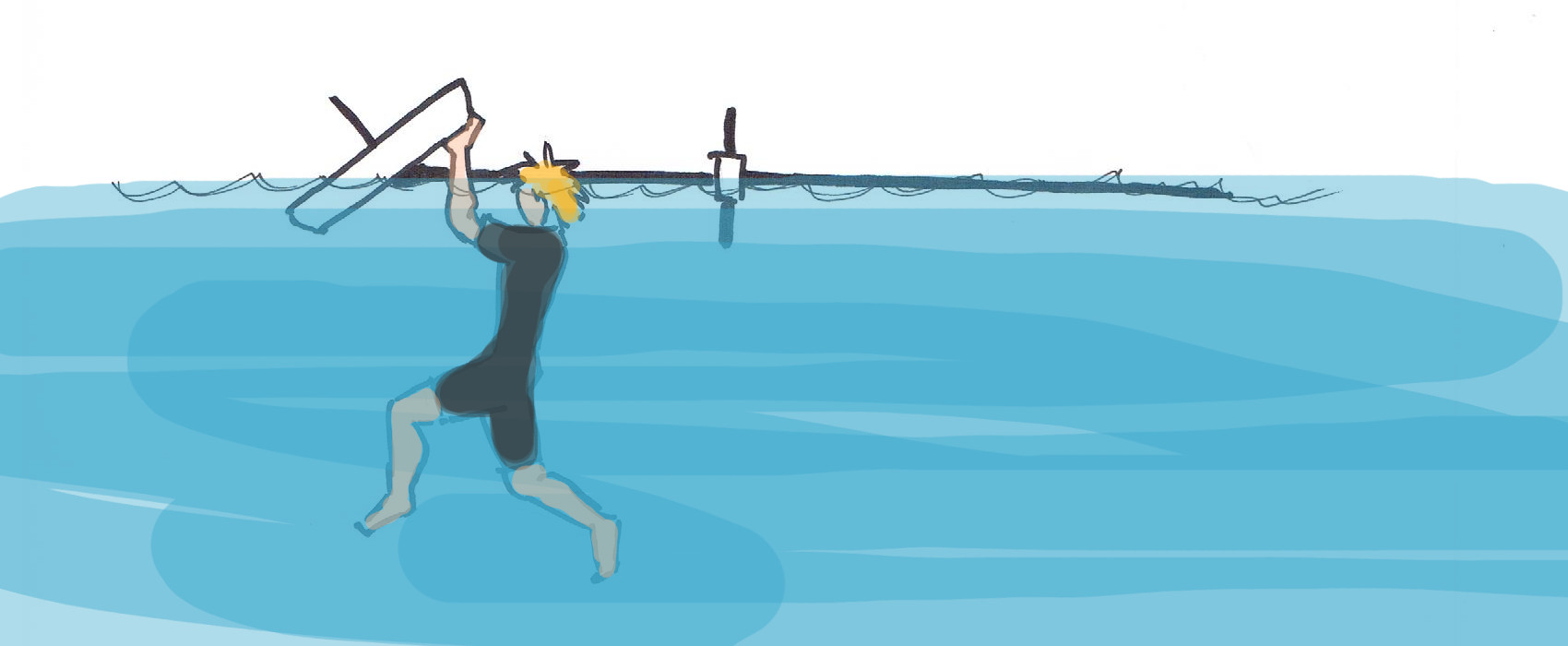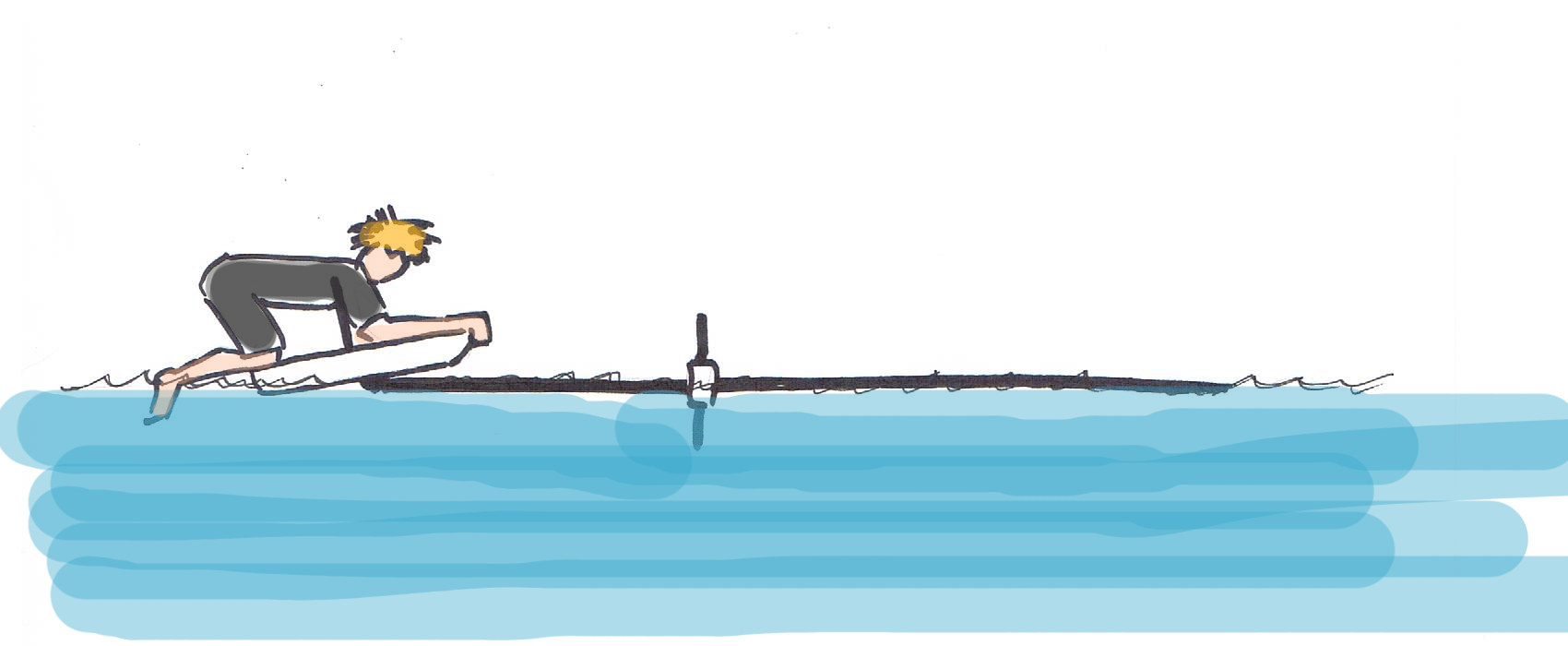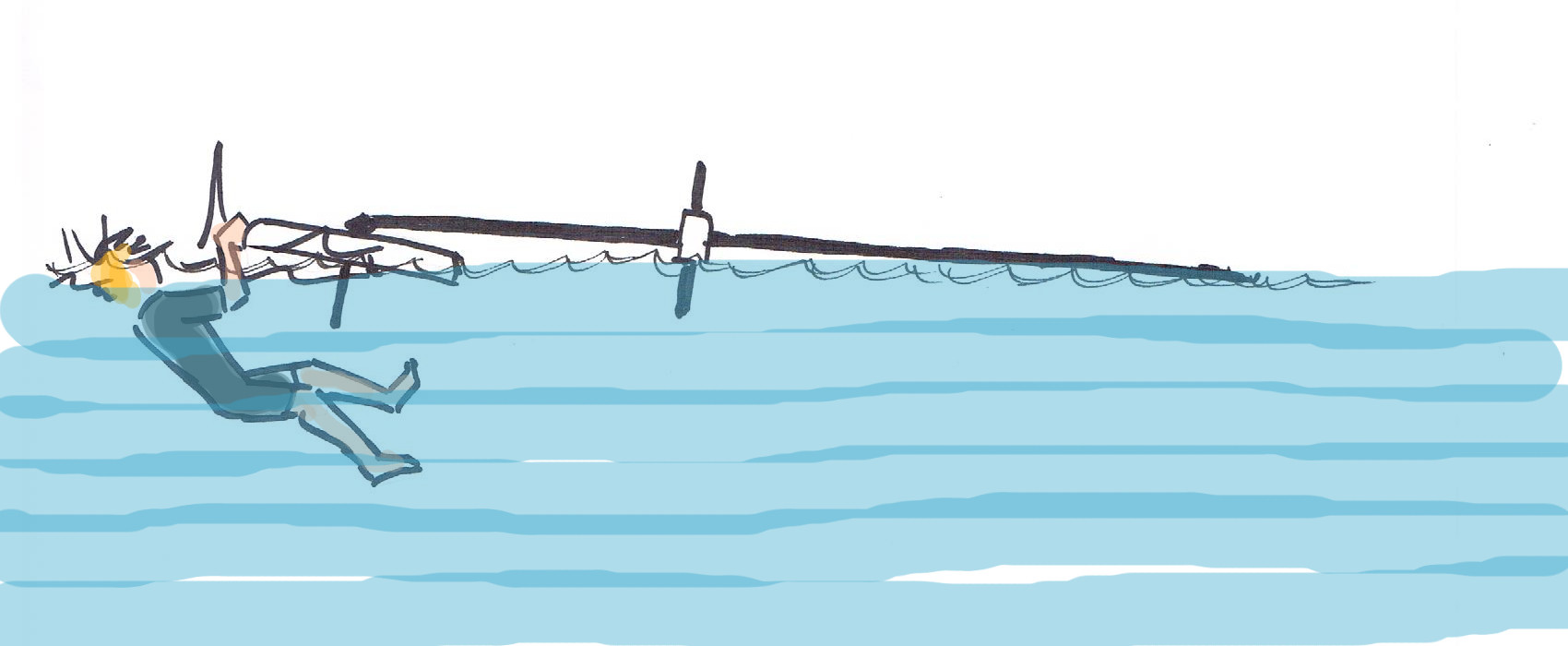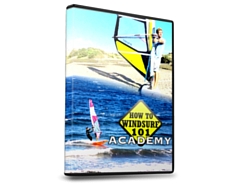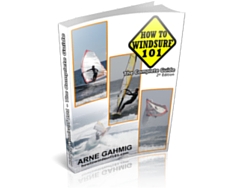The 3 Stages of Windsurfing Sail Control
Over the years I have been able to differentiate the 3 stages of sail control that people go through in windsurfing before one can say that they have control of their sail. I call them the step-dance, the hula-hoop and the windsurfer. They basically describe how you react to the changes in your body position that is affected by the wind and waves. I will go through these to help you determine at which stage you are at and what you need to do to get to the next level.
Level 1: The step-dance
This is the first stage. This stage describes the most natural reaction we have to getting pushed or pulled around as is the case on a windsurf board in the early attempts. Every change in our body position is corrected by moving our feet around. So if a gust hits us we get pulled forward and to compensate that displacement we move one foot or another. Good thing that we start off with a big, wide board. Overcoming this stage is the greatest limiting factor to being able to move to a smaller board.
Level 2: The hula-hoop
Once we learn to feel the changes in the sail pressure and our body position sooner we no longer need to move our feet. However, while we keep the feet in place, we still haven’t got the reaction to a gust or a lull down fast enough and so we move the hips either forward or backward to maintain the centre of gravity over the buoyancy of the board. In this stage we are still using the sail only for forward propulsion and not yet for stability.
Level 3: The windsurfer
The final stage and the way we should be windsurfing. People that have reached this level are easy to spot as they show no hectic movements on the board. As the gust hits them the simply sheet out in time to release some of the wind pressure in the sail so that they don’t get pulled over. They may even lean back with a straight body and sheet in to use the extra power.
So there you have it, the three stages of sail control that I have been able to differentiate. It is one more aspect that I can point out to students to show them that they are progressing when they feel that they haven’t improved. If you have any other subtle differentiation that you have noticed I would like to read of it in the comments.
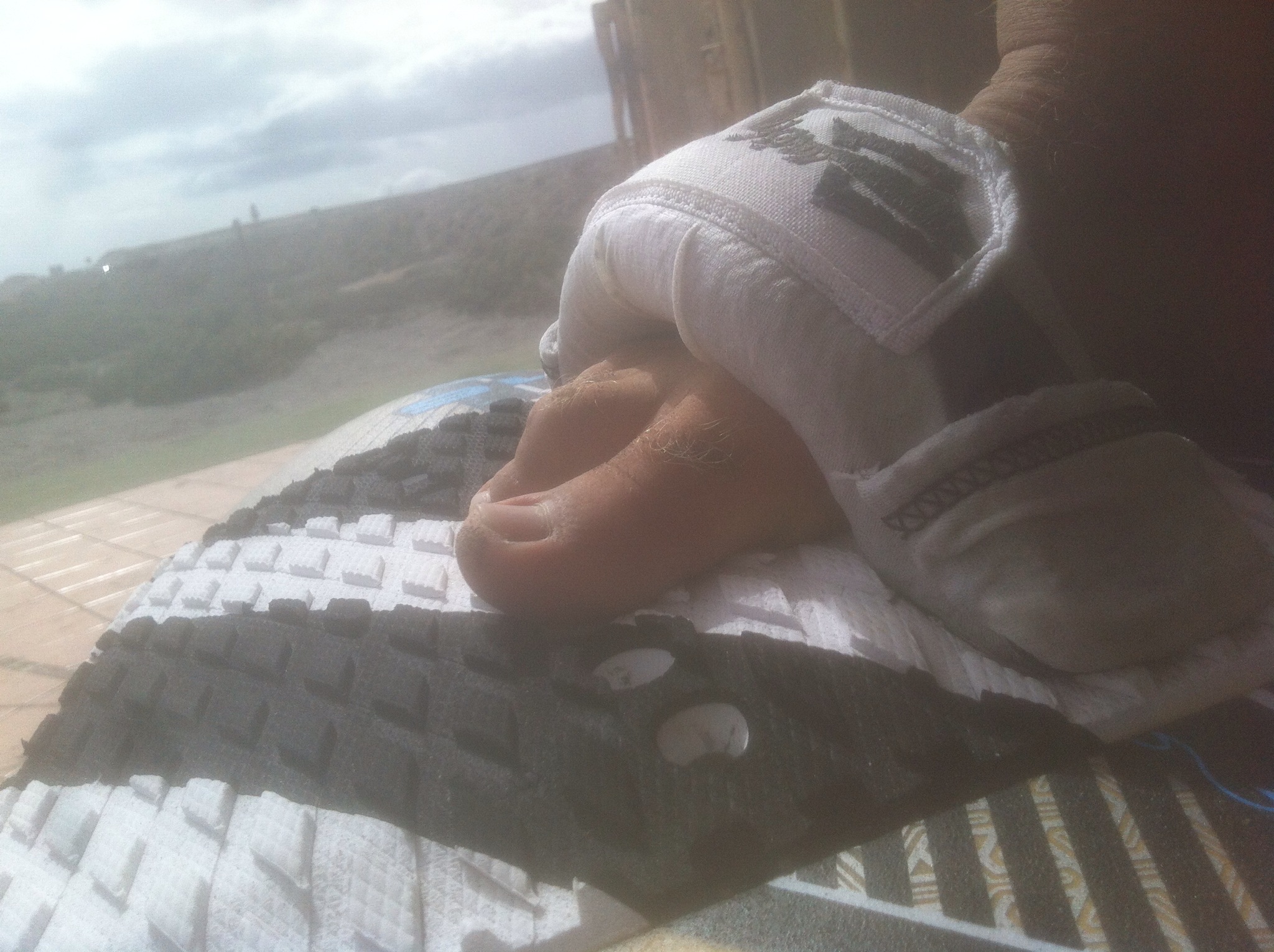
How wide should the foot straps be?
I don’t know how many feet I have looked at in the last few weeks. No, I don’t have a foot fetish… sorry to disappoint 🙂
No, it was because I was asked if the foot straps were the right size. So here is my take on how big/wide the straps should be.
Foot Strap Screw Placement
When you put your foot in the straps, the sides should be touching. Not too tight as you want to be able to get in and out easily. Also, you don’t want them too wide. I have seen many who have them too wide and to make up for them being too loose they have to set them up very tight so as to only allow the toes to fit.
Foot Strap Width
You want about half your foot to fit in the strap. The idea is to be able to get in and out easily when you want but also to stay in securely when you need it. The consequences of them being either too wide or too narrow are both very unpleasant.
Too wide
If the straps are too wide we risk two things. The first is not that problematic: being pulled out in a catapult. The second is pretty dangerous as if the strap is too wide we can end up with the entire foot slipping through the foot strap be it after a sideways landing of a jump or too much pressure on the back foot in choppy water. In that case I would definitely prefer a spin out.
Too narrow
If the straps are so tight that we barely get our tows in we lose a lot of control over the board on one hand, and lack of security against catapults on the other. The first is due to the fact that we can’t lever the board with our foot to keep in flat as we could with a wider foot strap. The second come front it being really difficult to resist the pull of the sail with only our toes as opposed to the whole foot. It is like wanting to do pull-ups with only your fingers instead of with the entire hand.
Ultimately the straps should fit around the foot nice and snug. As a rule of thumb, place your hand in the strap and have it fit loosely. This is a good width to start off with. I would begin with the straps being a little too tight and try going wider and wider after each tack until you find the width that you feel the most comfortable with.
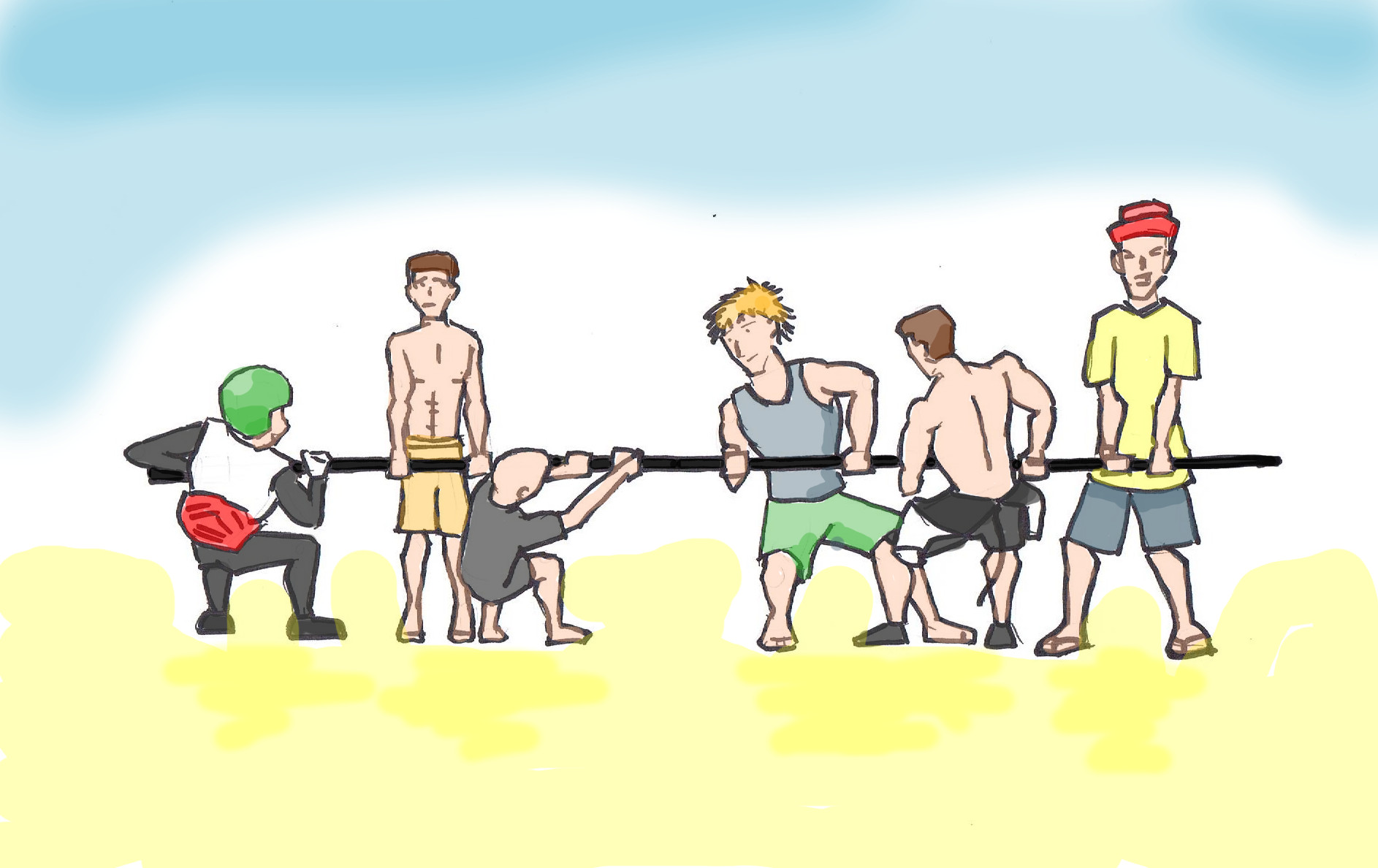
How to get a windsurfing mast unstuck
Every couple of weeks, usually towards the end of the day, we get a windsurfer walking up to the center desperate to get a few strong hands together to help him with his mast that just wont come apart.
Storing a full length mast or driving around with one is a nightmare. On top of this we usually don’t find out about the stuck mast until we are going to head home at the end of the day which is usually when there are less people left to help us on the beach.
Why does it get stuck?
Before we put the two pieces together, grains of sand and dirt can get on the surfaces where they join. When we try to get them apart after a session on the water we notice that they are stuck. Even if we put the mast together completely clean, in the water there is sand, mud and dirt which gets in through the slot where they connect.
Prevention
The best solution is preventing the mast from getting stuck in the first place. We do this by keeping the shaft and the inside of the mast clean, prefferably with soapy water and a clean cloth right before putting it together. Once the two pieces are together, put duct tape (or equivalent) over the point where they join. This will prevent any sand getting in on the water.
NOTE: I have no experience with camber sails but from what I have read this duct tape solution doesn’t work for cam sails. Check out Rogers post towards the end.
To get the mast unstuck
That’s all nice to know but what if you already have the problem? That is probably why you are reading this post in the first place. Well, do not dispair, there are a couple of tricks that you can apply.
Lubricants
Puring soapy water or oil over the opening and letting is settle in a little bit can loosen all the dirt inside. In order to get it as far in the mast as possible, bend the mast in various directions so that the liquid can seep in properly. You will properly have to do this a couple times.
Bending the mast
To bend the mast, find two points that are a little bit elevated and bounce the center of the mast as much as you can. After 15 minutes of this you can give it another try.
Two booms of doom
Another sneaky solution is to attach a boom on each side of the joint and to use the extra lever to turn the pieces in opposite diretions. This techique is criticised as it is said to possible damage the mast. Therefore the next method is suggested.
Tug of war
Get as many strong hands onto each side of the mast as you can find and have everyone turn the mast ends in opposite directions (as in each side turing clockwise or both anti-clockwise). If it doesn’t work in one direction don’t immediately dispair. Try out turning it in the other direction for a couple of senconds and switch back to the other side and alternate a few until it comes apart. Usually 3 or 4 attempts will do the trick if not less.
As a fun anecdote, my dad once won a crate of bubbly on a bet that he could get a mast apart. To be fair he had 28 windsurf teacher apprentices who all got together, fitting as many hands on the mast as physically possible and after two attempts of everyone turning counter-clockwise and them clockwise they finally got it apart to the crunching of sand grains.
Other methods
There have been heaps of discussions on forums providing ideas and suggestions. In one they talk about the “Sword in the Stone” (of King Arthur) equivalent of masts. Another one that is interesting is to fill the mast top with water from a hose.
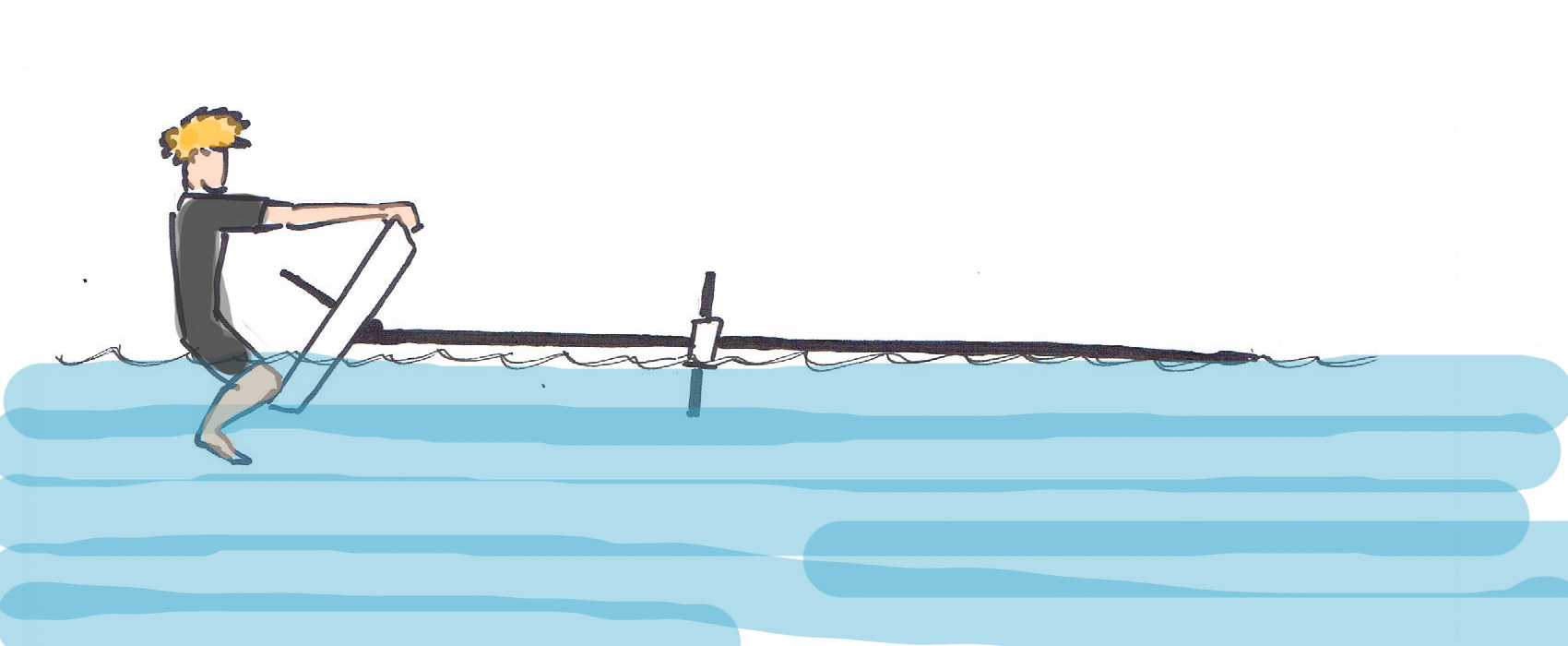
How to flip a beginner board easily
One thing that happens almost at least once per lesson is that my student is pulled by the sail more than expected, rather than letting go holds on to the back hand and is forced to step towards the rail with one foot. This sinks the rail and ends ups tipping the board over and falling in.
This leaves them in the water and with the board upside-down. I have seen endless combinations of how people have tried to flip the board back the right way up. From the correct and effortless way to completely inefficient passing through only managing through raw strength. Here I will explain the ways to avoid and the best way to do it.
How not to do it
Push upwards from the water
This is the least efficient way as we are trying to lift a heavy board around a large axis against its buoyancy without having solid ground under our feet. Thats a bit of a mouthful to say that all we really do is push ourselves underwater since we sink easier than the board.
Rotating the board with the arms like a steering wheel from the bow or stern

The correct way
Here is how to do it properly:
- Turn the board so that the mast is at 90° to the board
- Go to the center of the board (at the position of the mast foot).
- Get onto the board (yes, on the bottom side of the board)
- Grab the far end and put your knees onto the close end
- Lean backwards onto your knees, pulling the far end towards you util the board has turned
Things to avoid in the correct way
Do not try to turn it towards the mast
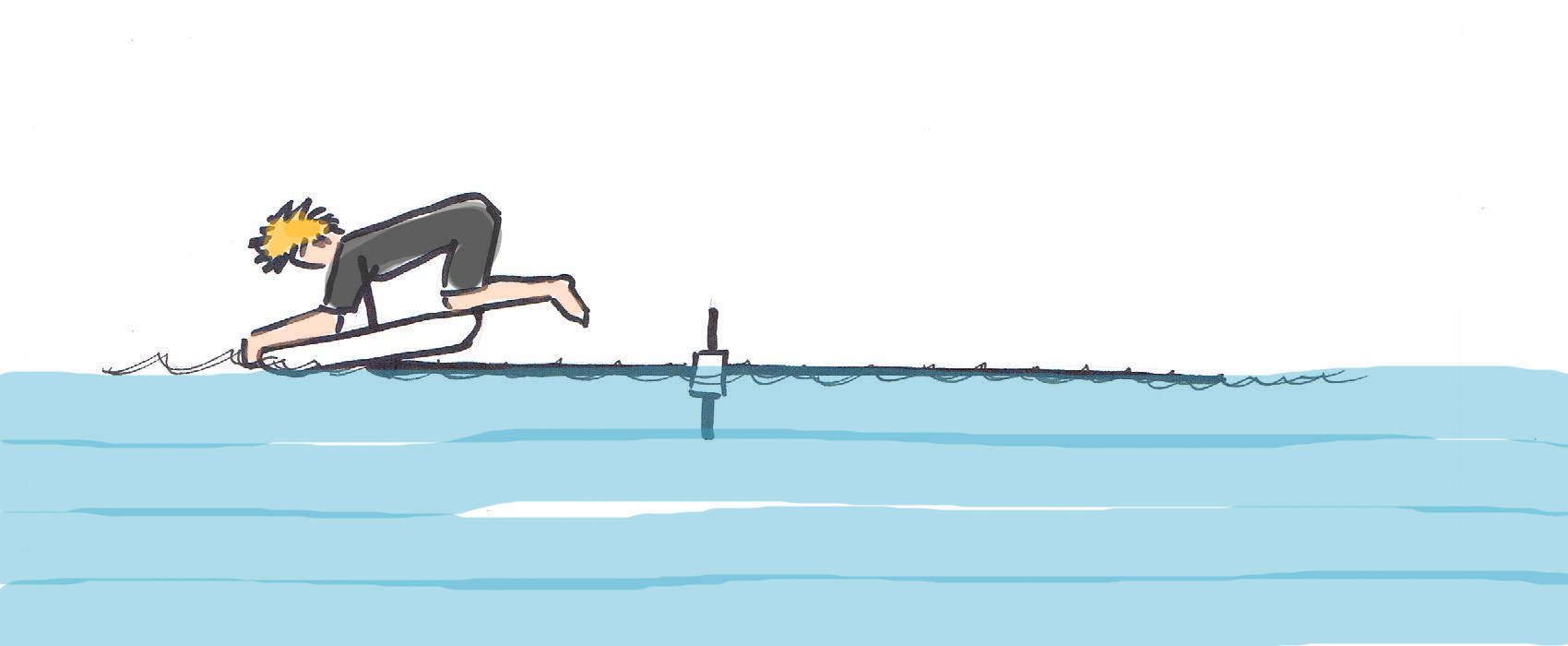
Don’t let go of the board before it is turned completely
When we have turned it more than half way, some consider the job done and just let go. I recommend to hold onto it until it has flipped over completely with us under water and then just pulling ourselves to the surface that 0.5 seconds later. By letting go of the board you lose control of its position with respect to you. This means that it can either flip back into the wrong position or even worse, keep turning towards you faster than you expected and hit you on the head. Just hold on all the way.
A tip for the correct way
As in all aspects of windsurfing, we want to see how the wind can help us save energy. In this case this occurs if the mast is pointing into the wind. In this instance, when we lift the far rail, the wind pushes against it from the other side, making it flip over easier and faster. This is a useful tip for the lighter sailors like children.
Use Suncream!
I have written on this subject before the summer in my post “Avoid Sunburn!” but since this is a pretty important subject I wanted to remind you all by sharing this video that has gone viral recently.
WEAR SUNSCREEN!!!
